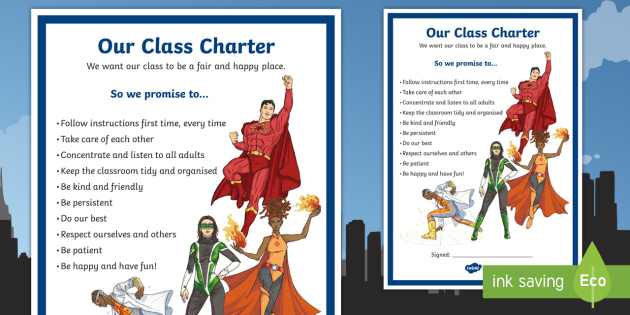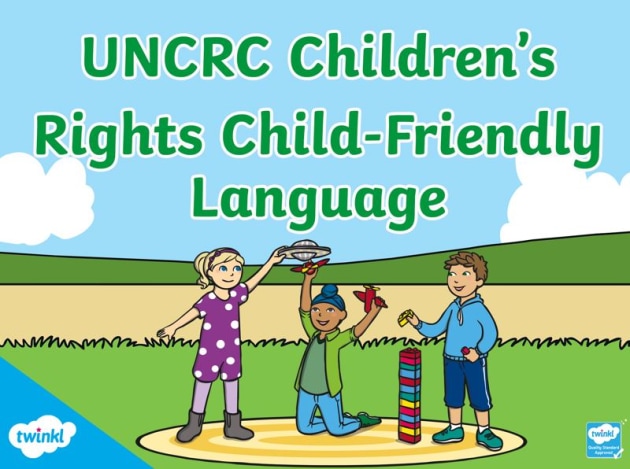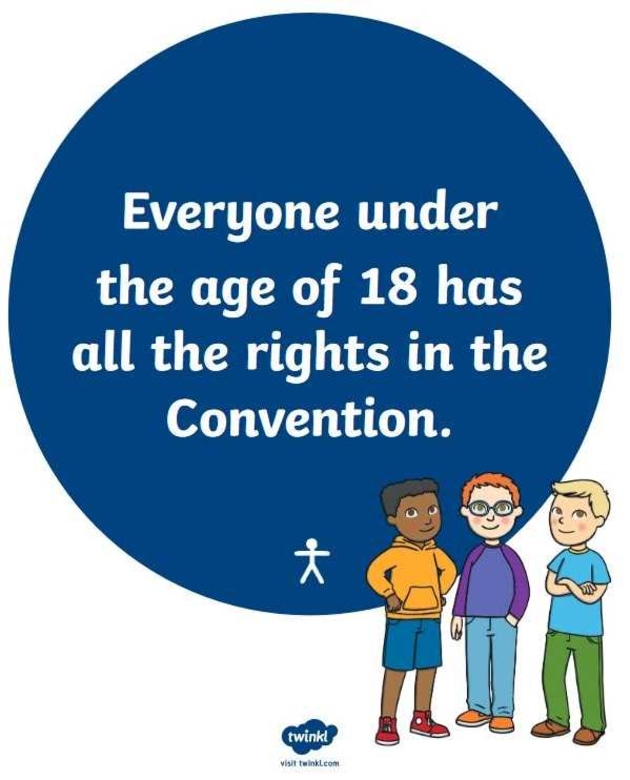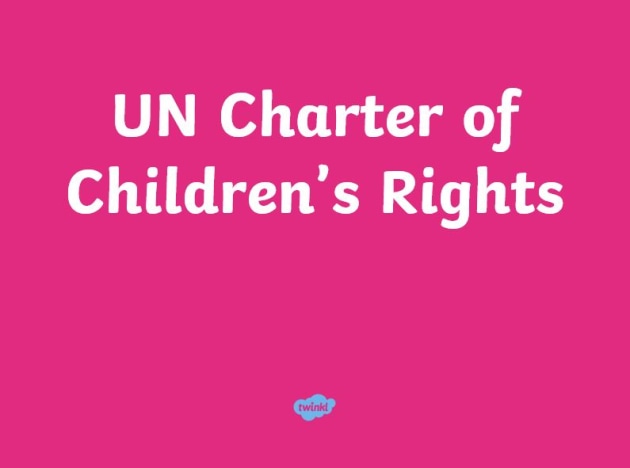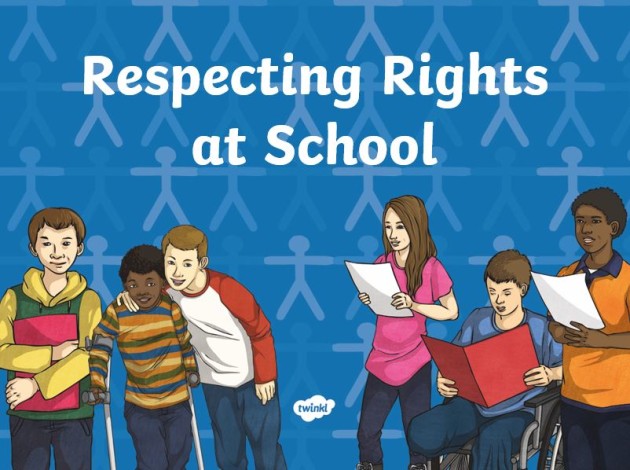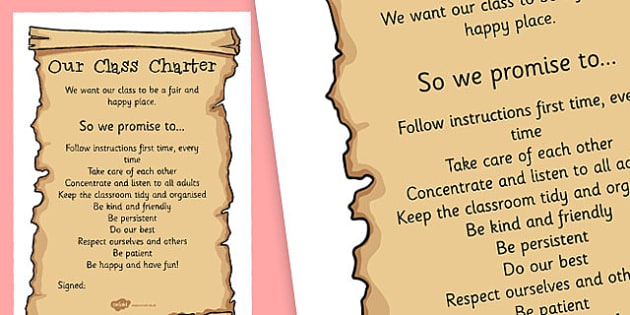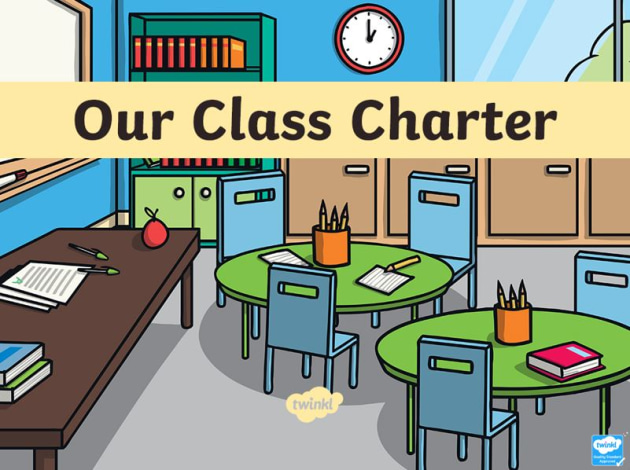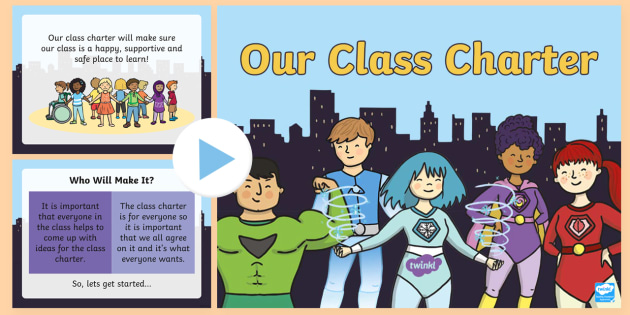


A class charter is a set of rules, promises or guidelines that children and teachers have all agreed on for the classroom.
They’re created to help children understand that they have certain rights in the classroom. These rights are important, as they help to keep them safe and happy while they receive their education.
Class charters also help children to develop a sense of responsibility, as they have to do their part in keeping the classroom fair for everyone.
Teachers can reference the class charter in lesson aims, especially when it comes to health and wellbeing. They can also use it to highlight poor behaviour when it breaks the rules laid out in the charter. Through reinforcement, children will learn for themselves which behaviours are not appropriate for a good classmate or responsible citizen to take part in.
Twinkl has an amazing selection of engaging learning materials. Subscribe and download today to get involved!
A charter is a democratically-agreed contract decided between members of a group. It defines the rights and privileges that everyone in said group has agreed everyone should get, setting it in stone. Often, it also includes expectations of behaviour or things that should not be allowed under the charter.
There are a few characteristics that a charter should have. One requirement is that everyone involved has consented to the charter, agreeing to the terms. It should not be forced upon people to join. Another trait of charters is that they are most successful when it outlines a goal for the project or group. Every rule set out should contribute to that goal, making it very clear where everyone stands.
On a global scale, groups might be businesses, corporations, cities, or even countries.
In the case of a class charter made as a part of a social studies lesson, the people involved would include the children taking part as well as the teacher. The class charter’s goals might include improving the learning environment and making sure everyone has what they need to thrive. It only works if everyone has signed.
An example of a charter includes the UN Charter on the Rights of the Child – we’re going to be looking into this in more depth, so keep reading to find out more.
We mentioned before that class charters help to inform children that they are entitled to certain rights in the classroom. Many charters are linked to the United Nations Rights of the Child articles (UNCRC), which detail things that every child should have according to international law.
The UN Charter of Children’s Rights was developed in 1989. Since then, governments around the world have promised that every child in their countries would be entitled to the same rights by adopting this UN convention.
The convention tells people what they need to do to make sure every child has an equal opportunity to grow, learn, be safe, be listened to, and be treated fairly.
Creating a charter helps children to understand what they need to survive and thrive as human beings. The rules that teachers put in place help them to provide what is laid out by the United Nations, but they also help children learn how to advocate for themselves.
Often the rules chosen for a class charter will support:
Knowing that it’s okay to ask for the things they need in life is an important part of children’s personal growth and development.
Class charters are not exclusively about children’s rights. They also include important values like citizenship that they will be working towards over the course of their primary school education.
Some areas to highlight include:
They can also make it extremely clear what poor behaviour looks like and why it’s so disruptive to a positive classroom environment. Children will learn what the teacher is looking out for as good behaviour as it provides them with a clear list of expectations for the classroom.
The class charter can be easily referred back to as a classroom management tool.
Teachers should create their class charters with input from the children. If someone has to sign it at the end to say they agree, they should have a say in what they think belongs there. This applies in reverse, too, as the teacher needs to be involved in the process.
You can approach this in different ways depending on the age of the class.
In younger classes, task children with coming up with what they think the rules should be to keep their classroom happy and productive. What does good behaviour look like to them?
Children may come up with ideas such as being kind, tidying up, saying please and thank you, or sharing toys or resources.
These behaviours should be modelled by the rules in the class charter.
In older classes, these rules might become more comprehensive and complex. Ideas of respecting other people, listening carefully and following instructions might come up, along with helping each other learn, working hard, and always giving your best effort.
As they get closer to secondary school, students will be more aware of what it takes to become a successful learner, a confident individual, and a good classmate.
No need to get stuck when coming up with rules to put in your charter! We've collected some class charter ideas for you. Take inspiration from the following list to find ones that will apply to almost every class:
You can simplify them for younger students or use them to spark discussion with older years.
Either way, be sure to discuss them with your class before adding them to the charter, as it’s important that everyone gets a say on the rules.
There’s no reason for a class charter to be a dull old document! Sparking children’s imagination and keeping them engaged is much easier with colourful designs and interesting scenarios. This applies to both the charter itself and the in-class discussions about what to put in it.
Consider these themed class charter ideas:
By creating pictures, posters, and drawings to use as a part of a wall display, children will be able to remember what their rights are and how they relate to the rules on the charter.
Speaking of rules – they’ll also get a lot of practice following them as they work in groups to discuss what to choose and how to action their plans.
Got your class charter idea but not sure what to do next? Here’s an instructional video on how to create your own display posters for the classroom using our fantastic Twinkl Create app.
You can have children create a prototype poster of their ideas and then turn it into something really magical using the power of digital technology.
No matter what your theme happens to be – from monsters to astronauts – you can use this guide to create a custom class charter design with brilliant illustrations, in full colour or in black and white.
Hopefully, we've helped outline the important facts for you and your children and answer top questions like, 'What does charter mean in social studies?' and 'How do I make a class charter?'
If you're looking for ready-made resources to bring the class charter system into your classroom, we’ve got your back. Take a look at our fantastic range of activities, games, worksheets, and display posters.
To get you started, here are a few of our top ideas:
There’s bound to be something to help you create a positive, calm, and safe classroom environment for your children. Parents and carers can find more information about the concept of a Rights Respecting School here.


